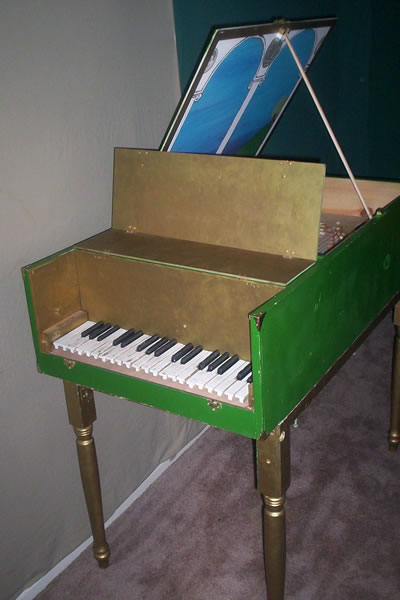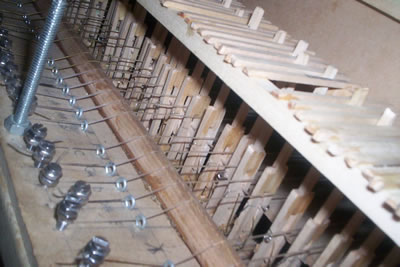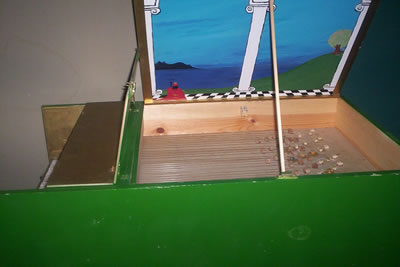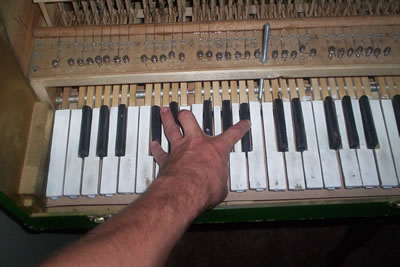
The Guitarpsichord
 Listen to Part 1 of Minuet in G on Guitarpsichord Listen to Part 1 of Minuet in G on Guitarpsichord
With a total of thirty-seven keys, the Guitarpsichord has a range of three octaves, from the low E on a guitar to an octave on the high E string. From there, he constructed the keyboard and jacks, which each required over twenty-five painstaking steps (multiplied by thirty-seven!). |

|
| Guitarpsichord |
Imagined and created by Stuart R. Campbell, the concept of the guitarpsichord first originated when he attempted to build an actual harpsichord out of materials that were readily available from local hardware, hobby, and music stores.
After determining that that would be too difficult, he tried to think of ways to build an instrument with his limited resources. Eventually the idea of using cheap and easily available guitar strings took hold, and that’s when he decided to make a guitar that could be played by a keyboard. The builder knew he couldn't make a harpsichord with his current tools and available resources, but he could build a guitarpsichord, so he went to work.
Using mostly methods of trial and error, he found out what did and didn't work, drawing many sets of plans and conceptualizing what he wanted. The sound board and tuning board were constructed first. On that, he built what he calls the “disconnected bridge”, or what others might simply call frets.

Strings attached including view of disconnected bridge |
The body, case, legs, and the rest came last, as the pieces had to be painted separately, and then attached. Tuning is achieved by turning a flathead screw with a screwdriver clockwise. Classical guitar strings were chosen for lower tension and a darker sound (making it more distinctive sounding than a harpsichord). Because the measurements for the instrument were taken from his classical guitar, the builder felt it only respectful to his guitar to use nylons. The best material, durability and financially wise, was a bit of thick nylon guitar string from what would have been the third string (G). Since having built it, the Guitarpsichord has been played at schools, featured on a British radio program, and has had mentions of it on the local classical station in Austin Tx, live music capitol of the world. It also gets played in public places so that people can see and hear his creation.
 |
|
